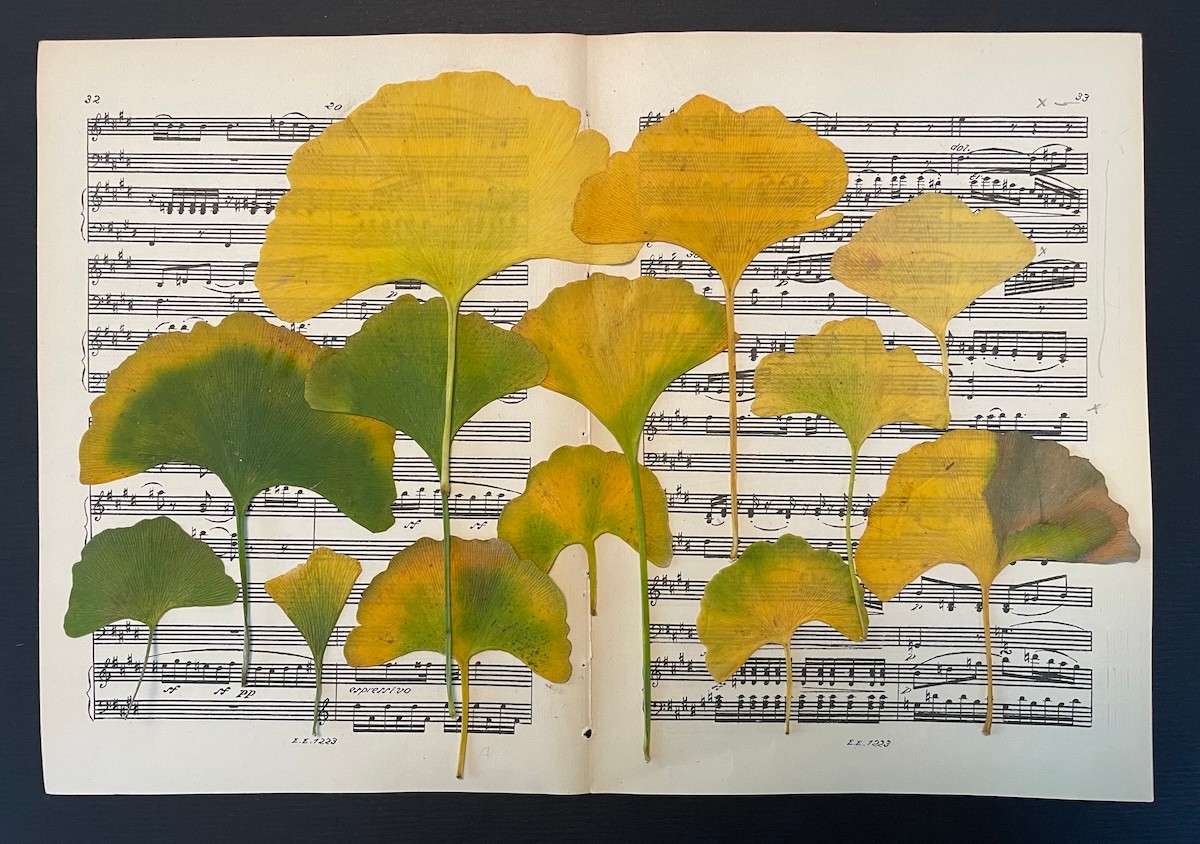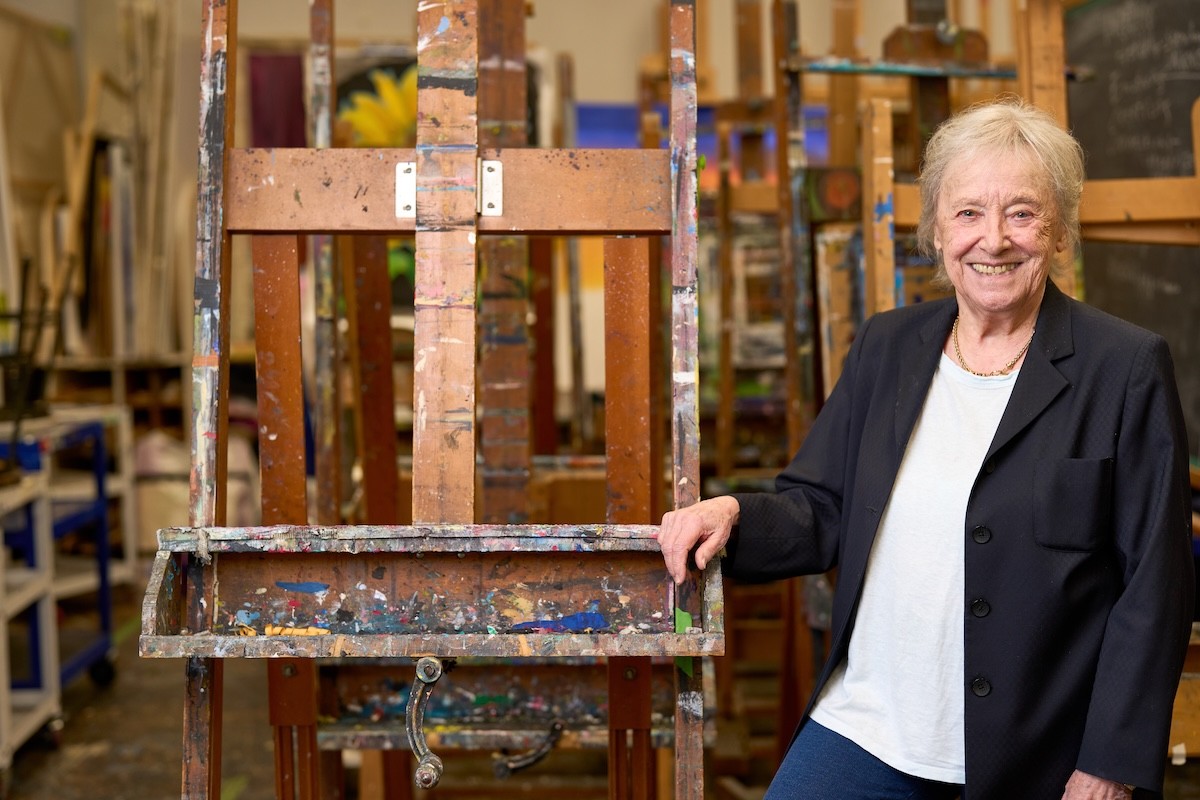A defining force in art education at the College for nearly 35 years, Judy Burton — TC’s Macy Professor of Education — arrived on 120th Street at a key inflection point. Art students worked in weathered studio spaces, and what would become the beloved Macy Art Gallery was a temporary storage room with collapsing walls. Working closely with leadership, Burton shaped and nurtured the Art & Art Education program over the next several years. She strengthened the program’s dual emphasis on studio practice and scholarship, helped secure funding to revive studio spaces and the Macy Arts Gallery, led community arts projects from Miami to Beijing, and offered visionary support to students that helped chart a new chapter for the program.
“That was the best possible challenge that I could have had at that time,” reflects Burton from her office, a charming space resembling an attic on the top floor of Macy Hall. While the challenge presented to her in 1990 may have intimidated others, Burton saw the immense possibility, thinking then: “I can build something. We can make something good happen.”
For Burton, the flourishing program is almost like a painting — with her colleagues, students and alumni “each leaving their mark over time.”
A fine artist and subsequently a developmental psychologist from London, Burton “cannot remember” a time when she didn’t draw and make things. Her early career as an art teacher sparked an interest in how art shapes imagination in young people, allowing Burton to forge a unique path at the intersection of the arts and the development of human minds.
Below, Burton unveils her reflections and wisdom for TC Today.
Prize your imagination and be ‘present’ to art. We are sorely in need of new ways of thinking about the arts, education and society and their intertwining.
Favorite TC Memories: During her first visit to the College before joining the faculty in 1990, Burton found herself starstruck when she unexpectedly met TC’s late Maxine Greene, a legendary education philosopher at the intersection of arts and social progress. The chance encounter struck Burton, who had spent years reading Greene’s work at the University of London. “I nearly dropped dead,” recalls Burton, who had imagined Greene as a slight woman only to be taken off guard by Greene’s tall stature and deep voice. “I must have stood there dumbfounded, and many years afterwards, I told her that story and we had a wonderful laugh.”
Burton also fondly recalls unearthing a recommendation letter for one of the College’s most revered alumni, the modern artist Georgia O’Keeffe, among a vast collection of files stored in today’s Macy Art Gallery. The brief letter, authored by faculty member Arthur Wesley Dow in 1916, simply stated: “Miss O’Keeffe is very good with her hands.” This letter of “faint praise” now resides in the College’s special collections, thanks to the stewardship of Burton.
Best Advice: “Prize your imagination and be ‘present’ to art. We are sorely in need of new ways of thinking about the arts, education and society and their intertwining,” says Burton. “We need to not be frightened to rethink things. It's valuable to rethink things in the light of the past, and I don't mean this skittishly, but thoughtfully, to ask all the time: ‘Are there better and newer ways of doing what we believe we should be doing?’ How can we reflect on what we know, and feel and know them differently?

I Go to Church in Brooklyn by Kristin Brenneman Eno (Ed.M. ’04, Art & Art Education), a multimedia collage included in the Macy Art Gallery’s alumni exhibit, “Accidents,” showing through July 10.
Strongest Influence: Teachers who imparted wisdom to Burton on the value of dialogical learning, through both the symbolic use of different artistic materials and open-ended discussion. “It is complicated to learn how to dialogue, genuinely and well. But I really do believe — particularly as I come at this both as an artist and as a developmental psychologist — that thinking is engendered through a dialogical approach to teaching and learning,” says Burton. “We need to ask challenging questions to make people reflective and curious about what it is they think and care about as they position themselves in their worlds.”
Thoughts on How AI is Influencing Art: “We have to ask, in this process, do we lose the kinds of unmediated experiences that are represented in and through the arts and which capture our human selves? Are fundamental human proclivities being lost in the excitement, drama and expansiveness of media?” questions Burton, who does use digital materials in her teaching. “I want to know what [generative AI] can give us, beyond what is instrumental and functional. How does it tap into the kind of deeper recesses of our ability to position ourselves in the world of others?”
Greatest Hope for the Future: “We have to get better at talking about the arts as normative voices, as natural proclivities of human minds, as ways of stretching out and saying important things to each other,” says Burton, referencing the Macy Art Gallery exhibit at the time of this interview that explores how the arts shape the choices and values of culture. “We need to be more thoughtful in the ways we think about the education of artists as educators, as leaders who nurture these capacities in others. We have lots of challenges.”
